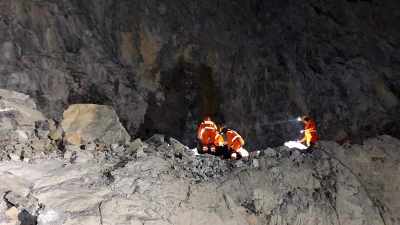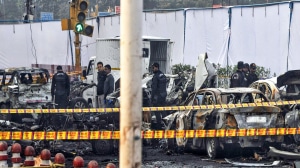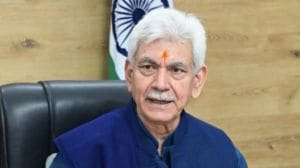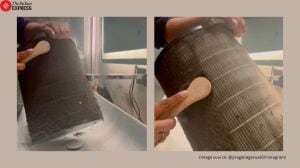On this day, during 1965 war: When Indian Army attacked Lahore from three sides
1965 war: The September 6 attack on Lahore was retaliation for the Pakistani aggression in Jammu and Kashmir. Recounted here are the details of this bold offensive which the Pakistani military establishment had not anticipated, assuming India would respond militarily in Jammu and Kashmir alone.
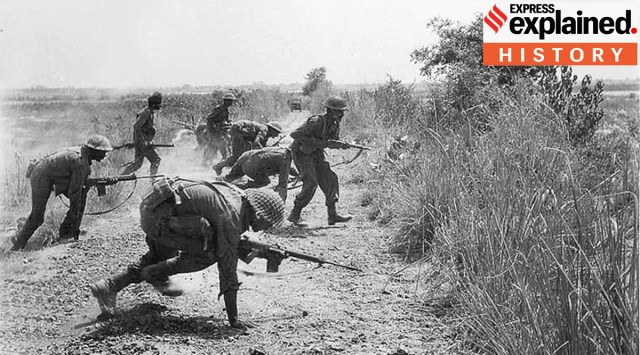 Frontline troops of the Indian Army fighting in Kasur sector of Pakistan. (Archives)
Frontline troops of the Indian Army fighting in Kasur sector of Pakistan. (Archives) On this day — September 6 — in 1965, the Indian Army dealt a severe blow to the Pakistan Army when in the early hours of the day it launched an offensive against Lahore from three sides.
Two days later, on September 8, an offensive against the Pakistani city of Sialkot was also launched simultaneously from the Pathankot-Jammu axis.
The September 6 attack on Lahore was retaliation for the Pakistani aggression in Jammu and Kashmir, and it caught the Pakistan Army by complete surprise.
Recounted here are the details of this bold offensive which the Pakistani military establishment had not anticipated, assuming that India would respond militarily in Jammu and Kashmir alone.
What were the events which took place on September 6, 1965?
In the early hours of this day in 1965, troops of the Indian Army launched an attack in the Lahore sector in Pakistan by advancing on three fronts. These three fronts of attack were on the Wagah-Dograi, Khalra-Burki, and Khemkaran-Kasur axes. This meant that Lahore was being threatened from three different sides.
The famous Wagah border joint check post on the erstwhile Grand Trunk (GT) Road was taken over in a surprise action by firing a few shots — and columns of the Indian Army raced down the road towards Lahore.
The leading Indian Army troops reached the outskirts of Lahore in Batapur, Dograi and Barki. Today, these villages have been subsumed by the expanding Lahore city.
What was the reason behind this attack on Lahore?
The Pakistan Army had been waging an undeclared war in Jammu and Kashmir since August 1965, when Pakistani infiltrators were pushed inside the (erstwhile) state under what was known as Operation Gibraltar.
On September 1, the Pakistanis launched a conventional military attack supported by tanks and the Pakistan Air Force in the Akhnoor sector near Jammu. The aim of the Pakistani forces was to capture Akhnoor and advance towards Jammu.
It was in retaliation to the Pakistani aggression in this sector that the Indian Army launched an attack across the International Border in Punjab.
Shortly after midnight of the intervening night of September 5 and 6, Indian Army troops crossed the international border in several places in Punjab. The attack caught the Pakistan Army by surprise in the Lahore sector.
Why was it important to launch an attach in the Lahore sector?
According to Lt Gen Harbaksh Singh, the Western Army Commander at the time, the strategic concept of this offensive was to force the Pakistan Army to deploy its forces in this sector, and to prevent their deployment in aid of the Pakistani offensive in Akhnoor.
This was done to offset the early gains made by the Pakistani forces in the Chhamb-Jaurian sector of Akhnoor.
The Indian plan also included the capture of large chunks of Pakistani territory in Punjab, which would give India a bargaining hand in future talks. Lt Gen Harbaksh Singh wanted to pose a threat to Lahore by occupying the Ichhogil Canal, a water obstacle that provided security to Lahore from an attack by Indian forces.
The eventual attack down the Grand Trunk Road by the Indian Army’s 15 Infantry Division easily overwhelmed the border guarding forces of Pakistan at Wagah. Elements of an infantry battalion reached as far as Batapur on the outskirts of Lahore down the same road.
But why were the initial gains made while advancing towards Lahore not adequately exploited?
After the initial success by the Indian forces attacking in the area of 15 Infantry Division and 4 Mountain Division, the momentum could not be maintained in many areas. Poor military leadership at higher levels resulted in the removal from command of many senior Army officers.
The Pakistanis sought to take advantage of the lull in the Indian advance by launching an attack of their own in Khemkaran sector, and managed to succeed in gaining ground till they were checked by the Indian Army at the historic Battle of Asal Utar, where the Pakistani Patton tanks were decisively routed.
What was the fallout of the audacious operation undertaken by the Indian Army?
The Pakistan government as well as the military never expected that India would open a front in Punjab. They only expected Indian retaliation in Jammu and Kashmir. Hence when the attack on September 6 took place, the Pakistan Army was caught by surprise.
The Pakistan Army was forced to rush reinforcements to the Lahore sector to fend off the Indian attack. It also had to divert the Pakistan Air Force from its focus on the Akhnoor front, and employ aircraft to attack Indian troops advancing in the direction of Lahore.
According to military historians, including former Punjab Chief Minister Capt Amarinder Singh, the capture of Lahore was not envisaged by the Indian military planners because of the large number of troops it would have required to hold on to the city.
However, there were plans to destroy the bridge over the River Ravi in the Shahdara area of Lahore, and to interdict the Lahore-Wazirabad highway in case the success in Lahore sector was to be exploited further.






- 01
- 02
- 03
- 04
- 05


